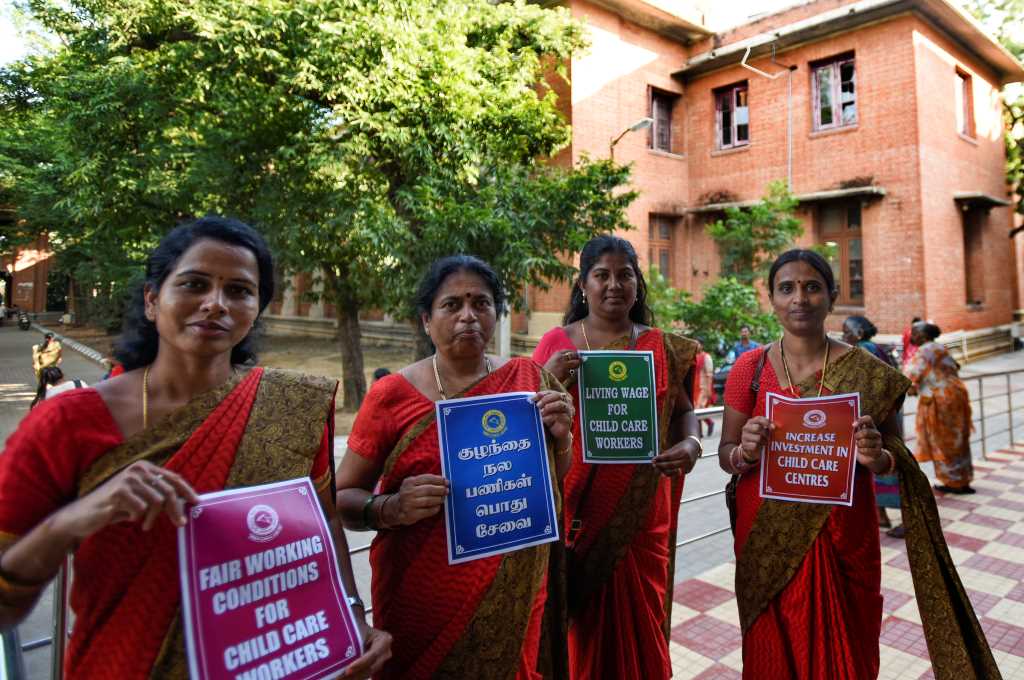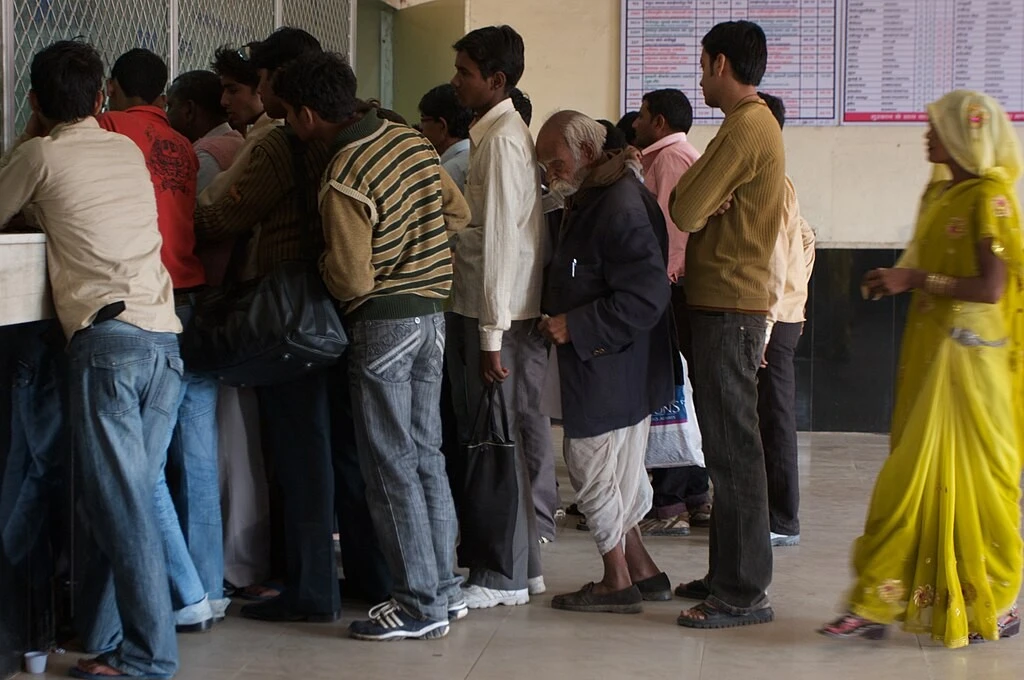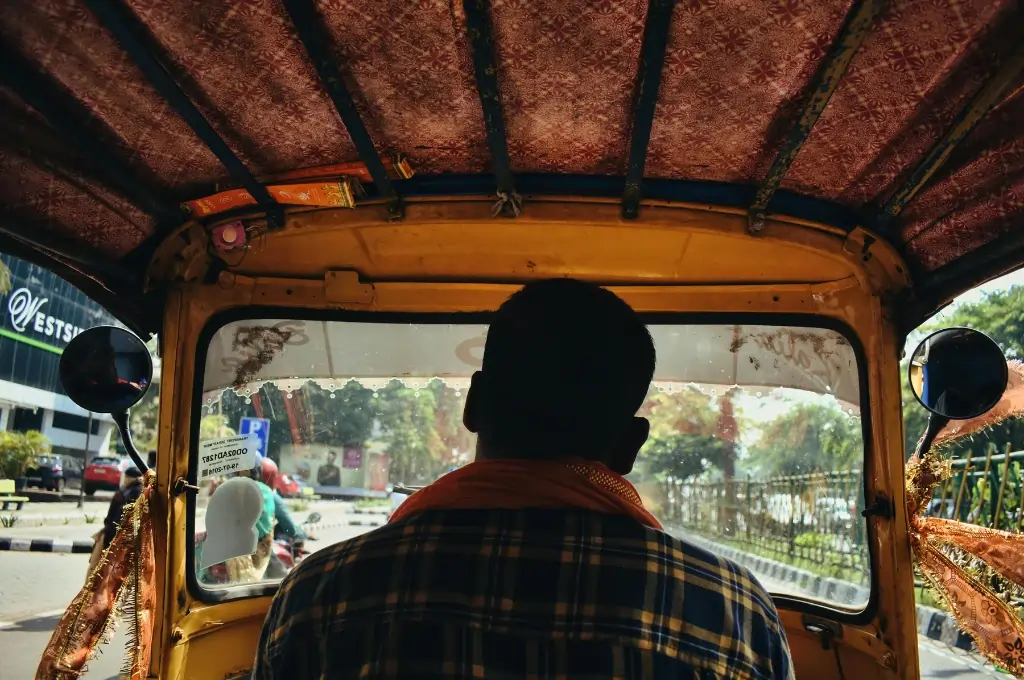In August 2020, four months into the pandemic, the Delhi police registered FIRs against 100 ASHA workers who were protesting against their abysmal service conditions. Two years later, the World Health Organisation named ASHA workers as one of the six recipients of the Global Health Leaders Award, in light of their contribution to global health.
The August 2020 protests were among several that erupted across the country as ASHA workers, who are female care workers employed under the Indian state’s flagship healthcare programme (National Health Mission), were pushed to the brink while serving the country during a pandemic. This was not just because they were overworked, like every other healthcare worker in the world, but because they have been denied dignified working conditions since the inception of their employment.
Employment designed at casualisation
In 1955, the Supreme Court delivered a decision on the nature and extent of executive power under India’s then recent constitution. The court held that, on analysing the provisions of the text, the constitution envisaged a system where the government (referred to as the “executive”) did not require a legislation to enact and formulate policies. In effect, the Supreme Court said that the functions of the State, when not covered by existing legislations, could be carried out through executive action. This was a seismic ruling because it meant that executive notifications, which are essentially internal decisions of any ruling government, could act as the State’s expression of a policy and therefore, the storehouse of citizen’s rights affected by such policies. In contrast to legislations, which are required to be debated on the floor of the Parliament, scrutinised by the opposition and often examined by Standing Committees, executive notifications are a far more summary affair.

Since the ruling in Ram Jawaya Kapur, the Indian State, speaking through her many governments, has expressed many of her welfare state obligations through executive notifications. These executive decisions, or schemes as they are also referred to, cover some very critical zones of operation. The National Health Mission, under which ASHA workers are ostensibly employed, is India’s flagship healthcare access programme and one leg of the backbone of healthcare in India. ASHA workers, under the programme, are tasked with implementing a multitude of tasks, ranging from providing natal care to mothers, to carrying out immunisation drives, contraception education and vaccination surveys in rural India.
The other leg of healthcare in the country is the Integrated Child Development Scheme, under which female healthcare workers, called Anganwadi workers, are employed to carry out the crucial task of providing nutritional and educational support to children. Despite the immense significance of their work, ASHA and Anganwadi workers are denied government employment and are instead classified as “honorary volunteers” under their respective scheme documents. This classification, along with the structure and design of their employment, serves to keep them distant from claims of regularisation and allows the state to pay them less than minimum wage while also denying paying them welfare claims like provident fund, gratuity and pension.
The plight of ASHA workers and Anganwadi workers, and their long standing struggle against their service conditions, is well documented. In this essay, we aim to argue that the injustice of the working conditions of these workers is not just inadequacy (that is to say that the State does not pay them enough) but about the broader perpetuation of a particular model of employment. We argue that this model, of entrusting the delivery and execution of welfare state obligation through executive schemes, is a deliberate form of casualisation of labour and must be looked at through a systemic lens, in order to truly appreciate the difficulties faced by the workers employed under these schemes.

United in exploitation
It is not surprising that workers who fall under the broad category of “scheme workers” perform a plethora of very different functions in society. Some work in the health sector, whereas others are educators, and many others are involved in the arduous task of ensuring that a wide array of citizens – from pregnant women to school going toddlers to infants – receive their basic nutrition.
In spite of this diversity, scheme workers are similar in two aspects – one innocuous and the other, far more debilitating. The innocuous reason is that scheme workers, as the name suggests, are most often workers who implement a particular social welfare scheme of the Union or state government. As mentioned above, ASHA workers and Anganwadi workers, along with other workers appointed under the same scheme, are frontline healthcare workers working under executive notifications. In addition to them, there are many other scheme workers who implement social welfare schemes of particular state governments, such as the Siksha Mitras of Uttar Pradesh, who teach in government schools, or the ward/village volunteers in Andhra Pradesh, who deliver 32 types of social welfare services to the doorsteps of the targeted beneficiaries.

The other reason that brings together all the scheme workers is the striking similarity in their working conditions. The uniform experience of all scheme workers has been that the government employing their services, by adopting the scheme structure, aims to ensure that the concerned workers are not covered under various labour laws. In spite of performing functions which are inarguably in discharge of State functions and similar to that of permanent employees of the government, scheme workers are not recognised as the government’s ‘workers’, but are instead classified treated as holding a ‘honorary/volunteer’ position.
Therefore, instead of paying wages to scheme workers, the employing government pays them an ‘honorarium’. The consequences of choosing this terminology has cascading consequences for scheme workers. To the extent that they are classified as being on ‘honorary’ positions and not as workers, they do not fall within the ambit of being a ‘workman’ for the purposes of the Industrial Disputes Act, which is the primary labour legislation in India. The effect of this is that scheme workers do not benefit from the myriad labour protections that the Act, and many other similar labour legislations which adopt the eligbility from the Industrial Disputes Act.
One of the important labour protections that the employing government circumvents as a result of this terminology is the law governing minimum wage, considering that scheme workers are only entitled to a ‘honorarium’ and not a wage. As a result, scheme workers across the board are often paid honorariums which are lower than the minimum wage, which is in itself quite abysmal across India. Recently, the Allahabad high court, appalled by the meagreness of the monthly honorarium paid to midday meal workers in Uttar Pradesh, directed the Union and state governments to urgently consider enhancing it.
Yet another action of the government indicates beyond a reasonable doubt that it designs the working conditions of scheme workers in such a way that they do not get the benefit of the various labour laws. Scheme workers (Siksha Mitras in Uttar Pradesh and ASHA workers, for instance) are often hired for a period of not more than 11 months. The Industrial Disputes Act requires that a worker should have a “continuous service” of at least 240 days (which translates to five working days for 11 months) in a year in an establishment to access several key protections under the law. This includes the safeguards against unlawful termination, lay-offs and closures and to be considered a permanent employee. Therefore, by limiting the contracts of scheme workers to less than 11 months, scheme workers are kept just under the statutory qualifications to enjoy the rights that permanent employees enjoy and that significantly lightens the obligations of the government employing the scheme worker.
The need for social welfare
The recognition as well as the enactment of these social welfare schemes as well as the posts of the scheme workers would go a long way in strengthening the foundations of their entitlements. A notable exception to the general marginalisation of the concerns regarding the entitlements of scheme workers is a recent decision of the Supreme Court of India which highlighted their universally questionable working conditions and held that Anganwadi workers and Anganwadi helpers are entitled to the payment of gratuity. However, this welcome exception is also founded in the structure of scheme work employment. The Court based its finding that Anganwadi workers and Anganwadi helpers are entitled to the payment of gratuity primarily on the fact that their work in Anganwadi centres is recognised and codified in the Food Security Act, 2013. As such, a legislation in the form of the 2013 Act was needed to recognise that Anganwadi workers and helpers are entitled to the payment of their gratuity.
Most scheme workers work under social welfare schemes which are neither recognised by a legislation nor are subsumed by a statutory framework.
In the case mentioned above, Anganwadi workers and helpers work towards the implementation of the Integrated Child Development Scheme, which barely provides for any rights and protections of these workers and helpers, apart from the acknowledgment of the State’s obligation to pay them an honorarium (which, as was mentioned above, almost always falls short of the touchstone of the minimum wage laws). However, the court managed to use the reference to their work in the 2013 Act as a tool to observe that the legislature intended to provide Anganwadi workers and helpers their rightful entitlement to gratuity. In fact, the Court has significantly diluted its own 2007 judgment in which it held that neither are Anganwadi workers employed in statutory posts nor is there a relationship of employer-employee between the State and the Anganwadi worker, on the ground that the 2013 Act has since been passed which clearly provides a statutory status to the work performed by Anganwadi workers and helpers.
It would, however, be mistaken to assume that other scheme workers enjoy a statutory status and recognition of their work like Anganwadi workers and helpers, which further led to the judicial recognition of their rights. In fact, most scheme workers work under social welfare schemes which are neither recognised by a legislation nor are subsumed by a statutory framework. These schemes are often in the form of executive orders and decisions, which do not broach the same amount of legal authority that a legislation commands. Nor do such schemes, lacking a legislative superstructure, enable the judiciary to recognise the statutory nature of the work performed by scheme workers and protect their labour rights. This also means that most of the scheme workers who are employed under schemes that lack a legislative backing do not enjoy the same amount of legal safety and recognition that Anganwadi workers and helpers are able to enjoy, through the judicial protection of their rights.
By operating without legislative structure, social welfare executive schemes shoulder the responsibility of providing for the entire operational functionality of these schemes. This is important to note because unlike legislations, which are typically highly scrutinised and required to be exhaustive, these schemes do not carry the same impetus or foresight. Executive schemes are very rarely sympathetic towards the collateral requirements to their primary objectives and tend to treat the workers employed therein precisely as collateral.
In 2011, the National Health Systems Resource Center, the technical support institution of the National Health Mission, published an evaluation report for the “ASHA program.” The 224 page report, dedicated to the ASHA program, finds little space for the working conditions and welfare of ASHA workers. Curiously, the report itself records that nearly 91% ASHA workers in West Bengal and 80% workers in Rajasthan report that ASHA work is their main source of income. The report further states, “Andhra Pradesh with a fixed payment policy in tribal districts has only 51% of ASHAs in East Godavari district reporting the ASHA work as their main source of income. 83% of ASHAs from Bihar also reported ASHA work as their main source of income followed by 75% of ASHA in Assam’s Karimganj district, and 57% in Kerala. Orissa has 19% of ASHAs reporting this work as their main source of income.”
It is a damning indictment of the purported volunteer nature of the ASHA programme that the State itself has reported such an alarming number of workers who are admittedly being paid their primary income source below the statutory minimum wage. This is entirely because by using the typology of a “honorary” scheme worker, the application of labour legislation has been circumvented.
The way forward
Despite its many drawbacks, the 2013 Act was a gigantic step in the positive direction for the regime of food security in India. Jean Dreze, a foremost economist-expert on food security in India, argued that the 2013 Act “led to some positive developments, especially in the poorer states. PDS reforms gathered further momentum, exclusion errors were greatly reduced, and food security became a lively political issue in many states. …Children’s right to nutritious midday meals, already upheld by supreme court orders, became a permanent legal entitlement. Last but not least, the NFSA affirmed the principle of universal maternity entitlements, albeit at a low initial level”.
Dreze’s comment about the impact the 2013 Act had on food security in India demonstrates the amount of scrutiny, precision and regard for detail as well as the legal certainty, especially in regard to rights, that a legislation can bring to the table. His view shows how necessary it is to provide a statutory framework for all the other social welfare schemes as well. If the presence of a statute has been generally advantageous to food security and other social welfare schemes in India, the same can be said about the statutory recognition of the legal rights and working conditions of the scheme workers working under those schemes. It is fair to say that statutory frameworks, as compared to executive orders, have a far greater likelihood to be considerate of the rights of scheme workers. To be clear, the issue here is not of the benefits of legislative over executive frames. It is the missing political will to accommodate the interests of workers and in our submission, a legislation carries a greater likelihood to do so.
Employment is not one single act, but in fact a bundle of rights.
The employment of scheme workers, in its many iterations across the country, bears a striking resemblance to another employment practice called casualisation. Casualisation, a practice that is largely accepted as a malpractice in most jurisdictions, is an attempt to lower the cost, upon employers, of employment by engaging short-term contract labour. Casualisation aims to cut costs by distancing employees from employers by limiting their rights to a single, often unevenly bargained, contract. This translates to exclusion from welfare payments like leave travel allowances, dearness allowance etc., while also undercutting the ability of workers to collectivise and negotiate better service conditions. Employment is not one single act, but in fact a bundle of rights which includes, among other things, provision for sick leaves, adjustment of wages for inflation, protection from arbitrary/sudden termination and the right to equal pay for equal work. Casualisation seeks to sever the bundle of rights that bonafide employment has and instead seeks to limit these rights by converting them into contractual privileges.
At its core, casualisation carries the objective of cheapening the cost of labour, at the expense of the dignity and social security of workers. It is a practice that the Indian state itself outlaws and disincentivises (as evident from the Contract Labour (Regulation and Abolition) Act, 1970). We believe that the design and structure of scheme work employment is a form of casualisation. A close inspection of these scheme workers, and their originating schemes, quite clearly shows that these workers are carrying out core state functions while being kept at the margins of labour legislations. Right from terming their wages as “honorariums”, limiting their terms to 11 months and classifying their employment as “honorary volunteers”, every aspect of scheme work employment seems to be an attempt to distance these workers from the State.
Scheme workers, simply by virtue of the kind of work they do, that of delivering rural healthcare, child nutrition, rural education, delivery of welfare benefits, are some of the most important workers of the Indian state. Under layers of politicians, bureaucrats and officers, it is these workers that deliver the promise of an egalitarian, welfare state to the footsteps of its most vulnerable citizens. Yet, despite the significance of their work, the Indian State has and continues to deny dignified employment to these workers. A report by Azim Premji University estimated that 19% of surveyed community health care workers in the country had to sell/pawn off personal assets to stay afloat during the pandemic. The irony of this quandary is that whereas welfare schemes in India are admittedly entirely dependent on the vital services of the scheme workers, they are themselves deprived of any modicum of welfare from their employer, the State.
While there has been no shortage of awards, gratitude and plaudits to these workers, the incessant characterisation of these workers as “heroes” and of their work as “sacrifice” has only served to further isolate them from regularisation of their work. It is important to understand that this characterisation as community heroes is not just a matter of political rhetoric but that it is central to the legal structure that keeps scheme workers away from claims of regularisation.
Interestingly, the abovementioned 2011 evaluation report on the ASHA programme notes, “In every state “community service” was a leading driver of women becoming ASHAs- and even on prompting by different types of investigators, this was the most common reply. The second most common reason- was of course financial, and one could say that for one third of women this would have been an important driver, even perhaps the main reason. Given their levels of poverty, this is not surprising. A distant third reason was access to government jobs.” In stating the surveyed motivations for the ASHA programme, the report, perhaps inadvertently, reveals what scheme work programmes fail to do. They champion, and continue to champion, the community service involved in their work. But for the more material motivations, that of job security, employment benefits and minimum wages, scheme workers don’t have much to go for. They continue to be rewarded solely by the abstraction of “community service” but the reality is that the millions of scheme workers, for their very real nation building sacrifices, can only be thanked in one way. Through the recognition of their work as work and of their employment as regular employment.
This article was originally published on The Wire.





